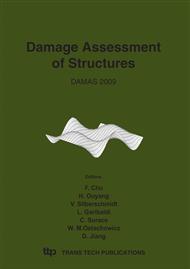p.431
p.439
p.447
p.455
p.463
p.471
p.479
p.487
p.495
Research on Real-Time Process Monitoring Technology and System for High-Speed Turbopump
Abstract:
Turbopump is a high-fault-rate component in Liquid Rocket Engine (LRE). The research on real-time process monitoring technology and system for turbopump is vital to increase the reliability and safety of LRE. In this paper, three real-time process monitoring algorithms for turbopump were studied firstly, on the basis of monitoring parameters selection and multiple domain feature extraction. Then, the real-time monitoring system realized by means of PXI (PCI eXtensions for Instrumentation) controller was introduced. And, aiming at the shortage of the previous system, the real-time process monitoring system based on DSP (Digital Signal Processor) for turbopump was studied to realize higher computing speed, which could conduce to extract multiple domain features and run manifold real-time monitoring algorithms. The new system could also satisfy the small-sized requirement in engine flying state.
Info:
Periodical:
Pages:
463-469
Citation:
Online since:
June 2009
Authors:
Price:
Сopyright:
© 2009 Trans Tech Publications Ltd. All Rights Reserved
Share:
Citation:


